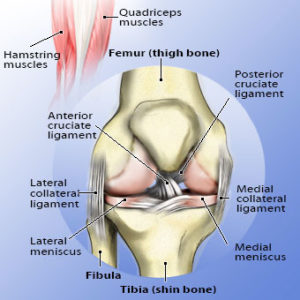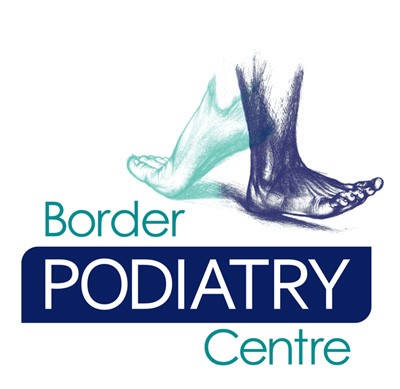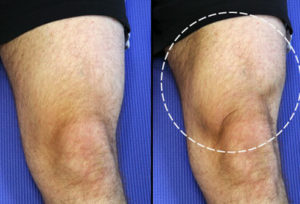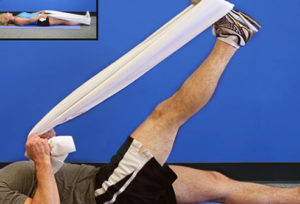Knee pain, who wants it and who needs it! Absolutely no-one, that’s who! ACL, PFPS, PCL, OMG and on and on.
Knee pain is a common complaint and for people of all ages! Sometimes the pain can be very specific in a certain area, or can often be quite generalised throughout the knee and surrounding the knee joint.
When you think about knee pain it is important to understand that pain can occur from bony structures, cartilage, ligaments, tendons and muscles or all 5 and because of this, understanding where your pain is originating from is a key part to managing your knee pain. The picture below is a great demonstration of how complex our knee joints really are by showcasing the different anatomical structures in and around the joint.

There are 3 major categories that knee pain can be divided into, each category below have some great examples of some corresponding injuries:
- Acute injury: ligament damage, meniscal tear, fractures, dislocation
- Medical conditions: rheumatoid arthritis, gout
- Overuse conditions: osteoarthritis, tendinitis, bursitis, cysts, patellar syndromes
Generally speaking knee pain is often flared by exercise, sometimes even as simple as getting up from sitting or walking around day to day. As our knee is such a large and mobile joint pain can sometimes also be triggered by other problems, such as a foot injury or biomechanics which may alter the way we are walking.
Some other signs and symptoms that can often accompany knee pain include:
- Knee instability causing difficulty when walking
- Limping due to discomfort
- Difficulty managing steps (both up and down)
- Locking of the knee joint
- Inability to fully extend the knee joint
- Weight shift on to opposite leg to offload affected side
We want to share 2 simple exercises with you to try and help with your knee pain!
Quadriceps sets aim to build strength in your quadriceps muscle group while eliminating weightbearing and reducing forces through the knee joint.
- Sit on the floor or your bed with both legs out straight
- Contract one or both of your quadriceps, hold this contraction for 20 seconds and then release (rest for 10 seconds and repeat). We want to perform 10 on each leg, twice per day to build upon and maintain quadriceps strength
Hamstring stretch is a great addition to managing your knee pain by trying to achieve and maintain a good range of motion of our lower limbs. When our hamstrings are tight this can change the way we are walking which can contribute to knee pain.
- To begin with lie on your back with both legs out straight.
- Keeping the legs straight, raise one leg up towards the ceiling and hold this position for 20 seconds and change legs. Similar to the quadriceps sets, we want to perform these stretches 10 times on each leg and repeat the stretches twice per day.
- As shown in the picture to the right you can use a sheet or towel to achieve a greater stretch or alternatively if holding this position is too much you can rest your raised leg against a wall for stability.
If you are finding that you might need a bit of extra help with your knee pain don’t hesitate to call the clinic to make an appointment with one of our amazing experienced podiatrists to get down to the bottom of your knee pain today!
All pictures: http://www.medicinenet.com/knee_pain_facts/article.htm


